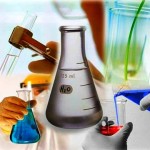 I’ve written previously about the rise of co-working spaces in pharma, with the likes of Biocurious and Genspace offering budding scientists access to cutting edge equipment for a low monthly fee. The corporate world has also been taking note, with companies like GSK opening up their own lab spaces to outsiders.
I’ve written previously about the rise of co-working spaces in pharma, with the likes of Biocurious and Genspace offering budding scientists access to cutting edge equipment for a low monthly fee. The corporate world has also been taking note, with companies like GSK opening up their own lab spaces to outsiders.
That isn’t the only application of open approaches to science however, and a recent study from Michigan Technological University has explored the burgeoning world of open source scientific equipment.
Open source science
The study reveals that the distributed digital manufacturing of open source hardware should make science, and scientific research, both more accessible as well as cheaper to undertake.
“In science, we all have this problem where we pay so much for scientific equipment that it overwhelms our budgets,” the authors say. This is despite a lot of the equipment being relatively straight forward in a mechanical sense, and certainly within the remit of current 3D printing.
An open source solution
The authors suggest that the solution to this is to divert existing equipment budgets towards the development of open source tools that are modular and easy to upgrade as requirements of them change and technology advances.
They believe that such an approach would produce huge cost savings, but also make labs better teaching environments too. They could also help to spur innovation in the science manufacturing industry.
Whilst such changes will obviously take time, the researchers quantified the potential benefits via a syringe pump test case. These devices are both ubiquitous and iconic, but prices can vary enormously, as can their use.
Open source syringes
The researchers developed 3D printable models, costing just $97 for a single pump and $154 for a double pump. These models are completely customizable, and with each design posted to open source repositories such as Youmagine and Thingiverse, the hope is that they will quickly be improved upon.
The models quickly proved popular, with over 1,000 downloads achieved in a matter of months. Each of these downloads acts as a counterbalance to the cost of purchasing a syringe pump.
“We know at the very least that our design is more cost-effective than low end syringe pumps,” the authors say. “You look at our syringe pump, and it’s way better than the low end ones — it matches performance of high end syringe pumps that anyone can build themselves.”
The ROI of open source
To calculate the ROI of their project, the authors delved into the substitution value of each download. In other words, they measured the difference between the price of a syringe pump and the cost of building their own tool design.
This figure was then multiplied by the number of downloads and tools made as a result of the downloads. Based upon this, they estimated that the ROI for this single project was somewhere between 460 percent and 12,000 percent.
The team are also confident in the quality of the products built using this approach. Key to this will be the calibration of open source devices, which is something that is currently difficult to track.
“That’s where the initial funding comes in,” Pearce says, adding that the National Science Foundation (NSF), National Institutes of Health (NIH) and other major funders could make a big difference in improving open source validation. “They can also build a centralized database to house that information — including the code — and make the hardware more accessible.”
Until such time as this kind of database is created however, the researchers, and those like them, will continue plugging away, one device at a time.
Anything that makes research quicker, cheaper and more effective has to be a good thing. Really nice to see these kind of projects happening.
Science is about opportunism. Dwarves standing on the shoulders of midgets.
Personally, I have no problem with advancement via Universities or specialist institutes. However, the influence of the benefactors is all too apparent in the world of academia. Multinational corporations have far too much say in where science is going.